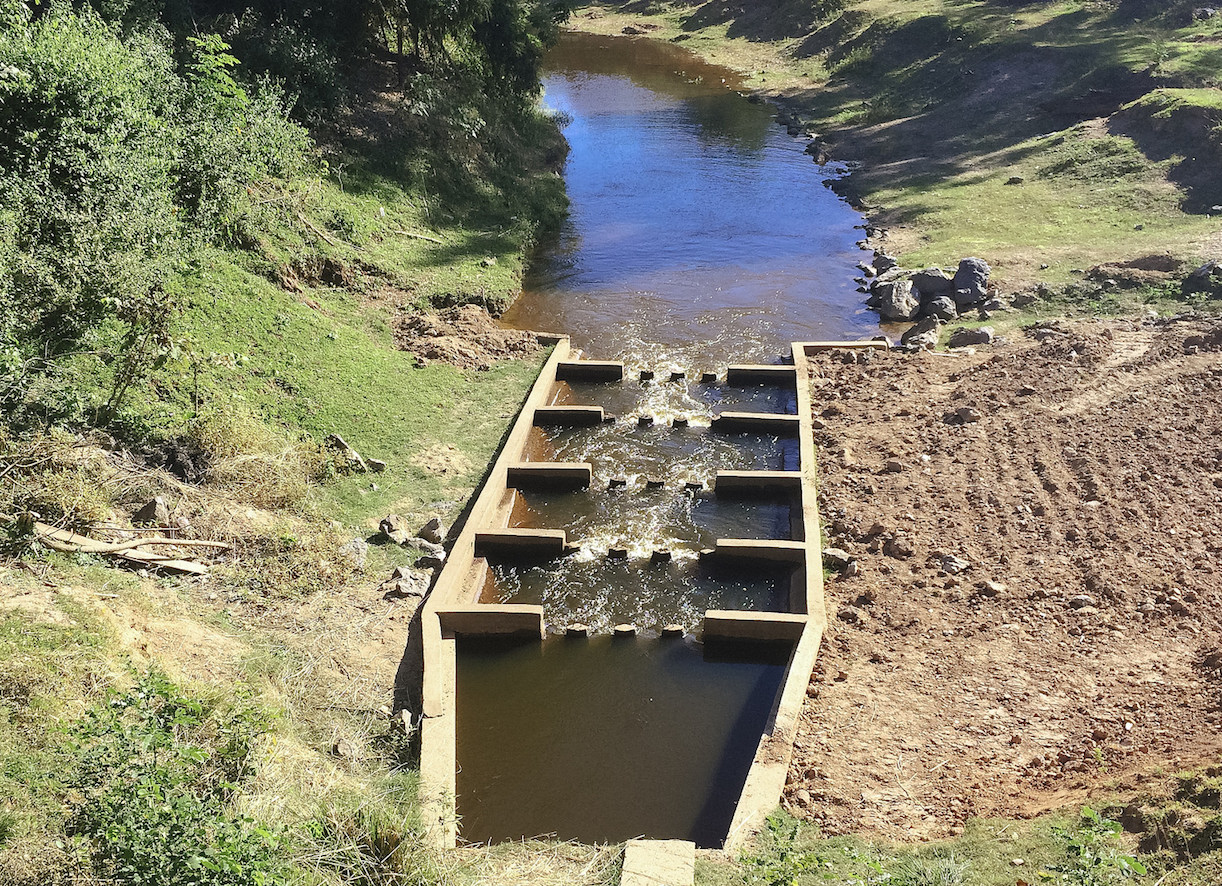
Location: Lao PDR
Duration: 2010-2015
Project Background: This project sought to primarily develop the first criteria for fish passage developed for Lower Mekong species, as well as understand the extent of current irrigation development and quantify potential social and economic benefits. A series of field-based assessments was devised to specifically answer three research questions:
- What is the current extent of floodplain development in Central and Southern Laos?
- Can effective low-cost fishways be constructed to mitigate the negative social, economic and environmental impacts of floodplain regulators?
- Does the construction of permanently-operating fishways provide quantifiable social, economic and environmental benefits to floodplain wetlands and communities?
The first question involved using a combination of desktop and field validation techniques to effectively enumerate, document and map fish passage barriers throughout two key catchments. The overall outcome was to generate a prioritised list that could be presented to donor bodies and investment banks to guide future restoration investment.
Question two was more focused on developing mitigation options for fish passage that could be applied at the range of identified and mapped barriers. A series of field experiments was devised to define the characteristics of fish passage that were preferred by Lower Mekong species. These characteristics were then used to construct a permanent demonstration fishway which was assessed to determine if it was possible to rehabilitate a floodplain wetland fishery.
The final question sought to determine whether it was possible to quantify if the fishway contributed to positive social and economic outcomes. These were assessed in two major ways: firstly, to determine the overall value of the fishery to local communities, and secondly to determine any perceived or real benefits arising from fishery recovery.
Project Results: Over 7,500 barriers to fish migration were mapped across two catchments; the Xe Bang Fai and Xe Champhone. Detailed characteristics of each barrier were documented and used to populate detailed geographic information systems databases. A prioritised list was generated and has been used to guide further investment opportunities in these catchments. The approach created a strong visual tool for highlighting the overall issue being addressed, which had been used in Australia with significant success
The project team developed the first design criteria, and fishway, for Lower Mekong species. The team demonstrated that an experimental in-situ approach was entirely appropriate for refining design criteria. Working with actual migrating fish in the field provided data that was unbiased from handling or laboratory effects. Fish were motivated to migrate which provided results that were directly applicable to effective design assessment. Constructing the first fishway designed for Lower Mekong species was a substantial achievement. Designed and built by the project team, with assistance from local labourers and contractors, the structure has provided passage for 177 fish species. Species passing through the fishway included three IUCN red-listed species. In addition, a range of larger catfish species was captured, mainly at night, providing information on the migratory habits of these species for the first time. Detailed information was also collected on small-bodied species, and juveniles of large-bodied species entering nursery habitat. These are all new information that will help to advance the knowledge and management of Mekong species into the future.
Socio economic surveys demonstrated that wetland fisheries are valued by local communities but were perceived to have declined substantially since regulator construction. Overall the community felt that fishway construction was a positive outcome, but also indicated that a strong management process will need to be in place to ensure long term success. Minimising overfishing, restoring habitat and implementing strategies to improve water quality were seen as valuable complementary actions to improve fisheries productivity. A survey following fishway construction revealed that fishers had caught species not observed for many years, indicating positive impacts.
Project Conclusions: Developing robust fish passage outcomes requires an integrated and long term approach. Implementing a strategy that sought to identify the scale of riverine development, develop a widely applicable solution and also capture social and economic benefits was a sound approach that had wider support from government and investment agencies. Using migrating fish, under field conditions, to develop design criteria was a key factor contributing to project success. In fact, these design criteria have already been used to facilitate the construction of eleven other fishways in Southern Laos, under the auspices of the Lao Irrigation Department with funding from the World Bank. In future work, it is strongly recommended that the project team disseminates the results widely to both government and donor bodies to improve opportunities for uptake at other sites. It is also important that barrier mapping work be continued in other key catchments to increase the spatial understanding of existing infrastructure development. Combining this information with an inventory of planned construction would provide a powerful tool for future investment opportunities. Finally, it is recommended that any future fish passage work use local villagers and labourers as key project team members. Locals provided invaluable insights into regional issues. Their support and participation were key factors contributing to overall success.
Project Contact: Lee Baumgartner
Learn More: http://aciar.gov.au/project/fis/2009/041
Download Lao Fish Passage Policy Brief (pdf)